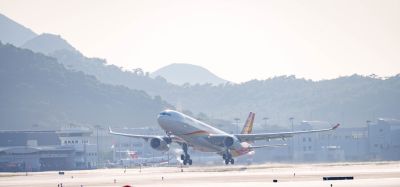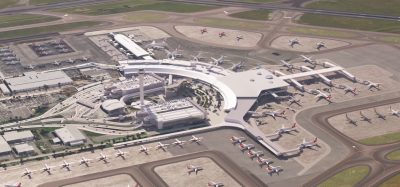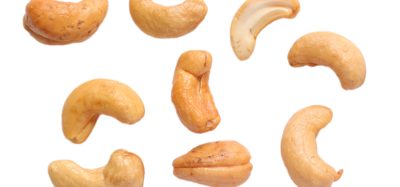Friction and prediction
- Like
- Digg
- Del
- Tumblr
- VKontakte
- Buffer
- Love This
- Odnoklassniki
- Meneame
- Blogger
- Amazon
- Yahoo Mail
- Gmail
- AOL
- Newsvine
- HackerNews
- Evernote
- MySpace
- Mail.ru
- Viadeo
- Line
- Comments
- Yummly
- SMS
- Viber
- Telegram
- Subscribe
- Skype
- Facebook Messenger
- Kakao
- LiveJournal
- Yammer
- Edgar
- Fintel
- Mix
- Instapaper
- Copy Link
Posted: 6 February 2007 | John Croll, Research Officer and Test Pilot, Canadian National Research Council and Angelo Boccanfuso, Senior Development Officer (R&D), Transportation Development Centre, Transport Canada | No comments yet
Wet and icy runways are the leading cause of landing accidents worldwide. But, while timely and accurate information about runway surface conditions is critical, methods for assessing weather conditions vary from one country to another, and information communicated to pilots can vary from one airport to another. In some countries, friction measurement is conducted for runway maintenance purposes only and the information is not passed on to air traffic controllers or pilots.
Wet and icy runways are the leading cause of landing accidents worldwide. But, while timely and accurate information about runway surface conditions is critical, methods for assessing weather conditions vary from one country to another, and information communicated to pilots can vary from one airport to another. In some countries, friction measurement is conducted for runway maintenance purposes only and the information is not passed on to air traffic controllers or pilots.
The Joint Winter Runway Friction Measurement Program (JWRFMP), an international initiative supported by more than 30 organisations in 12 countries, including the U.S. Canada, France, Germany, Norway, and Japan, has conducted extensive tests on aircraft braking performance and runway friction measuring devices on winter contaminated surfaces. One of the significant findings of this program was that aircraft braking performance correlates well with the friction measured by a decelerometer-based device on winter contaminated runway test surfaces.
Findings from the JWRFMP have led to improved aeronautical guidance material in Canada, where winter is a major preoccupation. A decelerometer is used to determine with some accuracy the effect that a contaminant has on reducing the surface friction of a runway and to provide meaningful information to pilots. The readings taken by this instrument are averaged and reported as a Canadian Runway Friction Index (CRFI).
An electronic recording decelerometer (ERD) is used for runway friction measurement during winter operations at virtually all Canadian airports. It’s a spot measurement device that uses a piezo-electric accelerometer to measure deceleration. The device is rigidly mounted in the cab of an airport vehicle, and readings are taken by accelerating the vehicle to 50 km/h and then applying the brakes to the point of wheel lockup. A number of measurements are taken at various intervals on each side of the runway centreline, and averaged to provide a single friction value for the entire runway surface. The output is termed the CRFI.
The advantages of the ERD over other friction measurement devices are its simplicity and the fact that the CRFI correlated well with aircraft braking coefficients measured during the JWRFMP. The main disadvantages of the ERD compared to continuous friction measuring devices are a longer runway occupancy time and the effect of operator technique on measurement, particularly on surfaces where contamination is not uniform.
Decelerometers are used only during winter operations and only on surfaces contaminated by ice or frost, wet ice (ice covered with a thin film of water), sand, aggregate material, compacted snow, loose snow up to 2.5 cm (1 inch) deep, and ice covered by slush. They are also used when anti-icing or de-icing chemicals have been applied to the runway.
Decelerometer readings may be inaccurate under certain conditions, so CRFI is not provided to pilots for wet surfaces with no other contaminant, for slush with no other contaminant, or when loose snow on the runway is deeper than 2.5 cm (1 inch).
The CRFI value describes braking action quantitatively. This number, along with a runway surface condition report, provides an overall description of the runway in the Aircraft Movement Surface Condition Reports (AMSCR) provided to air traffic services, which, in turn, provide it to pilots through ATIS or NOTAMs.
Pilots also provide reports, or PIREPs, to describe the runway braking action when the situation warrants it.
Reporting
A typical aircraft movement surface condition report (AMSCR) includes a CRFI number along with a surface description and other relevant information.
Typically during preflight planning, a NOTAM is available. Once airborne, the crew gets information through the ATIS – and with rapidly changing conditions, verbal updates are usually available through the tower.
Predicting landing distance
The prediction of landing distance as a function of the CRFI is based on an acceptable correlation of aircraft braking coefficient (Mu braking) and CRFI. Aircraft deceleration is modelled as a function of aircraft parameters and measured runway friction (CRFI), and models of aircraft braking distance and recommended landing distance are created for contaminated runways. The expression for recommended landing distance is given in terms of aircraft flight manual (AFM) landing distance and CRFI.
Figure 1 plots the mean aircraft Mu braking against the CRFI for 275 aircraft test runs on contaminated surfaces, including surfaces which were non-uniformly contaminated. To account for data scatter resulting from uncertainties in the measurement of both Mu braking and CRFI, as well as operation on non-uniform surfaces, a line is shown representing the minimum recommended Mu, given by the equation: Mu rec = 0.40 x CRFI + 0.02.
The term ‘recommended’ indicates that the values include a safety factor. The Mu rec line is drawn below at least 95 per cent of the data points in the above figure, giving a 95 per cent probability that the braking distances computed from the deceleration models will be achievable.
The CRFI tables of recommended landing distances were developed for a turbojet aircraft type using no reverse thrust (CRFI Table 1), or using either turbojet reverse thrust or turbo-propeller discing thrust (CRFI Table 2). A Falcon 20 deceleration model was used as a basis for the Table 1 data. Table 2 was based on the Falcon 20 model with a generic equation for reverse thrust and a Dash 8 deceleration model.
Application of the CRFI tables
Although the CRFI tables of recommended landing distance have been derived from performance data from Falcon 20 and Dash 8 aircraft, they are considered to be applicable to jet transport aircraft and turboprop aircraft in general for a number of reasons. First, the correlation between aircraft braking coefficient and CRFI was found to be similar for the different aircraft types tested. The relationships used for the deceleration models are essentially dependent on the aircraft wheel braking system (and reverse/discing thrust if used), and are not significantly affected by other aircraft characteristics. An aircraft with a more advanced anti-skid braking system could perform better than the CRFI table predictions, while an aircraft without an anti-skid system would exceed the CRFI table predictions.
Second, the equations used to model the components of the recommended landing distances were based on a series of Falcon 20 performance landings, but are typical of most aircraft types, being essentially time/distance relationships dependent on approach groundspeed, flare technique and time to deploy lift dump devices. The inclusion of safety factors allows for minor deviations in landing techniques, such as a slightly extended flare or late application of reverse thrust, which will result in landing distances longer than optimal, but still within the CRFI table of recommended distances. This was demonstrated during a series of landings by a First Air B727 at northern Canadian airfields, where 25 out of 26 operational landings were made within the CRFI table of recommended landing distances.
Third, the Falcon 20 braking distance ratios, calculated as a direct method of determining the effects of runway contamination on braking performance, were almost identical to data obtained by NASA for their B737 aircraft.
Fourth, major differences between aircraft types are accounted for by entering the CRFI table with the specific aircraft AFM landing distance, and factoring that distance based on the value of the CRFI. The CRFI table data are consistent with current regulations requiring the factoring of AFM landing distance for operations on wet or dry runways.
Fifth, a separate statistical study was conducted by Transport Canada to evaluate the application of the CRFI table data to three different turbofan aircraft types. The study concluded that the data in both tables were slightly conservative for all operational values of CRFI, with the exception of the data in Table 1 (no reverse thrust) for very low values of CRFI, which were slightly non-conservative. No changes to the CRFI tables were recommended.
CRFI Table Example: If a surface condition report was provided by the airport which included a CRFI reading of 0.4, an aircraft having an unfactored landing distance of 3000 ft. on a bare and dry surface based on the aircraft flight manual would need 5910 ft. of runway length without the use of thrust reversers using CRFI Table 1. If the pilot chooses to use thrust reversers, the recommended landing distance would be 5340 ft. using CRFI Table 2. If the friction reading had been 0.27 these distances would have been 6860 ft. and 5950 ft. respectively.
- The recommended landing distances in Table 1 are based on a 95 per cent level of confidence. A 95 per cent level of confidence means that in more than 19 landings out of 20, the stated distance in Table 1 will be conservative for properly executed landings with all systems serviceable on runway surfaces with the reported CRFI.
- Table 1 will also be conservative for turbojet and turboprop powered aeroplanes with reverse thrust, and additionally, in the case of turboprop powered aeroplanes, with the effect obtained from discing.
- The recommended landing distances in the CRFI Table 1 are based on standard pilot techniques for the minimum distance landings from 50 ft, including a stabilised approach at Vref using a glideslope of three degrees to 50 ft or lower, a firm touchdown, minimum delay to nose lowering, minimum delay time to deployment of ground lift dump devices and application of brakes, and sustained maximum anti-skid braking until stopped.
- Landing field length is the landing distance divided by 0.6 (turbojets) or 0.7 (turboprops). If the Aeroplane Flight Manual (AFM) expresses landing performance in terms of landing distance, enter the table from the left-hand column. However, if the AFM expresses landing performance in terms of landing field length, enter the table from one of the right-hand columns, after first verifying which factor has been used in the AFM.
- The recommended landing distances in Table 2 are also based on a 95 per cent level of confidence.
- The recommended landing distances in Table 2 take into account the reduction in landing distances obtained with the use of discing and/or reverse thrust capability for a turboprop powered aeroplane, and with the use of reverse thrust for a turbojet powered aeroplane. Table 2 is based on the Table 1 recommended landing distances with additional calculations that give credit for discing and/or reverse thrust. Representative low values of discing and/or reverse thrust effect have been assumed, hence the data will be conservative for properly executed landings by some aeroplanes with highly effective discing and/or thrust reversing systems.
- The recommended landing distances in the CRFI Table 2 are also based on standard pilot techniques for the minimum distance landings from 50 ft, including minimum delay time to application of discing and/or reverse thrust. In Table 2, the air distance from the screen height of 50 ft to touchdown and the delay distance from touchdown to the application of full braking remain unchanged from Table 1. The effects of discing/reverse thrust were used only to reduce the stopping distance from the application of full braking to a complete stop.
- Procedures for entering Table 2 from the left-hand or right-hand column are identical to those for Table 1.
Conclusion
Braking coefficients were obtained for several instrumented aircraft during full braking tests on winter-contaminated runways during the JWRFMP. These data were compared to the runway friction measured by the Transport Canada ERD to provide a model for the prediction of aircraft landing distance on winter contaminated runways based on the CRFI. Tables of recommended landing distance, independent of specific aircraft type, have been developed as a function of the CRFI and published by Transport Canada as advisory material.
Specific conclusions supporting the development of the CRFI tables are:
- Aircraft braking coefficients measured during full anti-skid braking did not vary significantly with groundspeed on contaminated surfaces;
- Aircraft braking coefficients correlated well with the output of the ERD, a decelerometer based friction measuring device;
- Each of the three major classes of aircraft tested (business jet, medium transport and turboprop) showed a similar relationship between braking coefficients and CRFI;
- The landing distance data in the CRFI tables were corroborated by separate aircraft tests and statistical studies; and
- The use of safety factors was necessary to account for the variations in aircraft performance parameters on contaminated surfaces.
Technical reports on the Joint Winter Runway Friction Measurement Program can be obtained at www.tc.gc.ca/tdc/projects/air/f/9048.htm

















